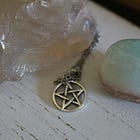Interview: Midge Raymond & John Yunker
On literary activism, publishing, and pouring passion into prose
Midge and John changed my life. It was only when I discovered their publishing company, Ashland Creek Press, that I realized fiction can be just as powerful a form of activism as any other. No longer did I feel guilty for choosing horror movies over vegan documentaries or fantasy novels over academic tomes. I could use fictional worlds as a proxy for the nonfiction world, finding themes, both good and bad, that relate to animal rights in reality. If life imitates art, then Midge and John are among the foremost leaders reimagining the role animals play in both.
In addition to Ashland Creek Press’s marvelous essay collection Writing for Animals, Midge and John have just released Animal Writes, a book chock-full of essential advice for any author who wants to make the world a better place for animals.
General Questions
Can you share a little bit about yourselves, including how you came to care about animals and creative writing?
We are both writers and co-founders of a boutique publisher, Ashland Creek Press, devoted to environmental and animal literature. We are passionate about animal rights and consider ourselves “literary activists.” We believe there’s tremendous opportunity to open hearts and minds about animal issues through literature.
Many of us have childhood dreams of becoming a writer. When did you decide to give it a shot?
Midge: I did have that childhood dream, and ended up working in journalism and in publishing before writing and publishing short stories and eventually novels. And now everything I write has an animal angle in it.
John: I’ve always written but didn’t really consider myself a creative writer until I published the short story “The Tourist Trail,” which was inspired by our work with Magellanic penguins many years ago.
Most animal advocacy focuses on creating tangible changes in the real world. What role can the arts play in changing how people think about animals?
Art can reflect our society and call out how to make it better. Best of all, art and especially literature can imagine a better future for animals. Art can imagine new traditions—vegan Thanksgiving meals, for example—and by imagining these futures and alternative realties, art normalizes a better world in our minds, which lays for the foundation for taking action.
What is a boutique publisher, and what are the benefits of choosing one like Ashland Creek Press over a larger press?
We are a small press with a focus on environmental and animal literature. While larger publishers have considerably more resources, such as wide distribution and publicity staff, we offer everything a traditional publisher does, plus more personal attention and a longer-term commitment to our books. We still advocate for the books we published a decade earlier, whereas bigger publishers usually move on to the next season’s books within a few months. And we don’t have the high turnover of bigger publishers, in which many authors end up losing their editors even before their book is published.
We live in an era when anybody can, and many people do, write and publish novels entirely on their own. What can authors do to make their work stand out amongst the fray?
First and foremost, tell a story people can’t wait to read! Be original, and be passionate about your work, both on and off the page. Also, if you’re going to go your own way, be sure you invest in professional editing and production. You want your book to look and feel as professional as it can be. Most of all, you have to be stubborn and invested in the long haul. Self-publishing can be daunting, and sometimes depressing, but there are many success stories from authors who jump-started their careers through self-publishing. And finally, no matter how you publish, promoting your work and getting it in front of readers is paramount.
Book Questions
Animal Writes was born from your Writing for Animals book/class. Looking back, why did you think that teaching authors how to write about animals was important, and how has your thinking on the topic evolved as you developed the Writing for Animals class, hosted workshops, and wrote Animal Writes?
Words have power, and writers bear a responsibility to use words in ways that help, rather than harm, animals and all living creatures. We began the book and class in an effort to raise awareness to the ways that writers often objectify or villainize animals without awareness. Also, as readers ourselves, we want to see more books in the world that open eyes and hearts to the many animal species we share this planet with. In the Writing for Animals program, we were inspired by how many writers want to advocate for animals, and we continue to meet writers at various stages of their journey. Animal Writes offers a way to help them continue that journey.
In both Writing for Animals and Animal Writes, you emphasize the difference between writing for animals and writing about animals. Can you expound on that here?
When you write for animals, you’re thinking of how you can help animals rather than how they can help you. Too many books about animals tend to focus on how they help humans—or animals are featured merely as props rather than as characters in their own right. Writing for animals is not about how we use animals, but it’s about recognizing them as individuals, as sentient beings, and it’s about honoring them for who they are.
In your professional experience as both writers and publishers, how have attitudes toward animals and animal advocacy changed over the years?
The world is clearly awakening to animals like never before, though, sadly, the world still wears collective blinders regarding the animals we eat and abuse. So it’s uneven evolution, in which some animals receive greater consideration and protections—like the animals we share our homes with—while other animals remain overlooked, like chickens and cows. But this is why we exist—to raise awareness and compassion for all animal species through our books and through our Writing for Animals program.
I’m guessing you, me, and the people reading this interview are some of the very few who think about animals on a regular (or constant) basis. Even so, at least half the books I read have nothing to do with animals. How can authors be inclusive of animals and address animal rights issues without writing an “animal book”?
Unless you’re writing a book set on the moon, you’re probably setting the book in some place where animals are a constant presence. Now, we wouldn’t recommend adding animals just for the sake of doing so. But subtlety goes a long way, and we encourage writers to be aware of animals in their work and any impacts the human animals may have on them, intentionally or unintentionally. Calling these out or simply avoiding the normalizing of animal abuse—such as eating meat, wearing animals, and so on—can have a huge impact on readers. Writing for animals also means considering your human characters—if one happens to be vegan, for example, providing their perspective, even in small doses, can enlighten readers. And it also presents opportunities for conflict with other humans, which can move a story forward and keep readers highly engaged. Above all, we don’t want our work to be preachy; any animal advocacy on the page needs to be done seamlessly within the context of the story for it to be successful.
Research is an essential component of an animal author’s writing process. But what about other writers? If, say, a vegan author were writing a book unrelated to animal rights but still wanted to incorporate subtle pieces of pro-animal messaging in their work, how should they approach the research process?
The good news is that the internet can help you research any species or place on this planet—and help you discover experts you can interview, such as researchers or other writers. There is a misconception that you have to travel to every place you plan to write about. While doing so certainly helps, it by no means is required to write a believable novel or short story. Nonfiction, of course, will require a great deal more authenticity. But if you’re short on funds or time and want to advocate for an animal species, step outside your front door, and you’ll bump into numerous species who could use a little advocacy, like squirrels, birds, and deer.
In my mind, environmentalism is included under the animal rights umbrella because the environment is only as important as the beings who depend on it. In what ways would you like to see environmental literature embrace animal rights, and vice versa?
We founded EcoLit Books to connect animal rights and environmentalism. We believe we’re seeing a “new environmentalism” emerge that very much makes this connection, and that views hunting and fishing and other extractive practices as counter to true environmentalism. But it’s an uphill battle to be sure. Too many people view environmentalism as an electric car and passive home building, which is part of it. But they conveniently overlook eating animals, which is far more destructive to our planet, not to mention devastating to billions of innocent animals.
Like any form of activism, vegan writers can put pressure on their stories to be the one thing that turns someone vegan, but that can lead to finger-wagging prose if we’re not careful. What’s the best way to include pro-animal themes without coming off as “preachy”?
At some point during the writing process, we all have to consider our audience. If you’re writing for mainstream readers and hope to open their eyes to animal issues, you have to go about it carefully. As with any story, you don’t want to lead with the message but weave your themes through the work via a specific character or plotline. And as a vegan writer, you might also create characters who are the opposite; doing so is sure to create conflict, which is critical to any story—and seeing both views in a story is important and offers all readers characters that will resonate with them. But, in the end, you have to write what you want to write and listen to your gut. A lot of agents and editors may be uncomfortable with animal rights themes, due to their own use of animals, but you have the right as an author to put your own truth on the page.
What sort of advice would you give to novice writers, people just starting their writing journey, who want to use their words to make a difference for animals?
Start with short stories and essays. These can be less intimidating for new writers and will also give you an opportunity to have something to send out for publication more quickly and to get a feel for the publishing landscape. (Our EcoLit Books website offers writing opportunities for environmental and animal writers, from journals to publishers.) You can explore characters and issues through a short story that you later turn into a novel, something we’ve both done. Also, read as widely as you can—not only books by vegan authors but also those by non-vegan authors, noting what can be done more effectively for animals. And keep in mind the myriad genres at our disposal—letters to the editor can be a wonderful form of advocacy. As another example, we wrote a mystery novel, Devils Island, with the goal of telling a suspenseful story while also raising awareness of the plight of Tasmanian devils. Writers can use thrillers, romance, science fiction, and so on to make a difference for animals by drawing in all types of readers.
In my opinion, an engaging setting can make up for dull characters or contrived plotlines. Your novels include rich descriptions of settings, making the land feel like a living, breathing thing rather than stationary scenery, while also treating the animals who live there as characters leading their own stories off the page. What can other writers do to bring their settings to life?
Focus on all of the senses of a place—sound, smell, feel—and not just what it looks like. Like researching animals, researching place is equally important, and if you can’t get to a place, read about it and also watch videos, documentaries, films—anything that can give you more of the sounds and sights of the place. And of course, how the human and nonhuman animals live within a place will help the landscape come alive as well.
During your Animal Writes book launch, John said that genres are underutilized by animal advocates. (As someone who predominantly reads genre fiction, I strongly agree!) How can the conventions of genre fiction offer authors unique ways of addressing animal rights issues in their work?
If your goal is to reach readers, go to where most readers are—which is within genres such romance, mystery, thrillers, and sci-fi. A genre presents an amazing opportunity to wrap an animal theme within a larger story, such as a murder mystery or romance. For example, we published a romantic comedy by a French author called The Green and the Red, about a vegetarian restaurant owner who falls in love with a pork executive. We’ve also published a YA trilogy of paranormal books about a “vegan vampire”—a fun, animal-friendly take on the Twilight series.
In my experience, animal advocacy through fiction isn’t taken as serious or necessary activism in the broader animal rights movement. How can we, as literary activists, show fellow animal advocates that this kind of work is important?
Activism takes many forms, from protests to rescue to literary activism. Unfortunately, literary activism doesn’t get the attention it deserves. There are plenty of documentaries, for example, on the horrors of animal industries—but where are the dramas? We’re getting there, but stories—whether novels or films—need to be tactfully written so as to not feel “preachy,” as you noted. And, most of all, they need to be palatable to mainstream readers. Those who won’t watch a documentary on slaughterhouses aren’t likely to read nonfiction about factory farming—but if these issues were woven artfully and thoughtfully and seamlessly into a novel, whether a mystery, thriller, or literary drama, readers would enjoy the story and inadvertently learn about the issues, which could be a spark for change.
You told Animal Writes readers, “Think about the types of literature, art, and film that inspire you to create.” So, what inspires you?
We’re inspired by all genres of writing and art that elevate animals as characters. We’re inspired by writers who embrace their activism by using their talents to make the world a better place for animals. And most of all we’re inspired by compassion and those who extend their own to all beings.
Final Questions
How can readers find you online?
Ashland Creek Press: website, Instagram, Facebook
EcoLit Books: website, Instagram, Bluesky
Anything else you’d like to share?
To stay in touch, join our free newsletter at EcoLit Books.






Great interview. Thank you!
I’m currently working on a non-fiction book and a documentary lol but after reading this, I feel so inspired to get back to fiction, which is honestly really what I love more than anything. Thanks for this!